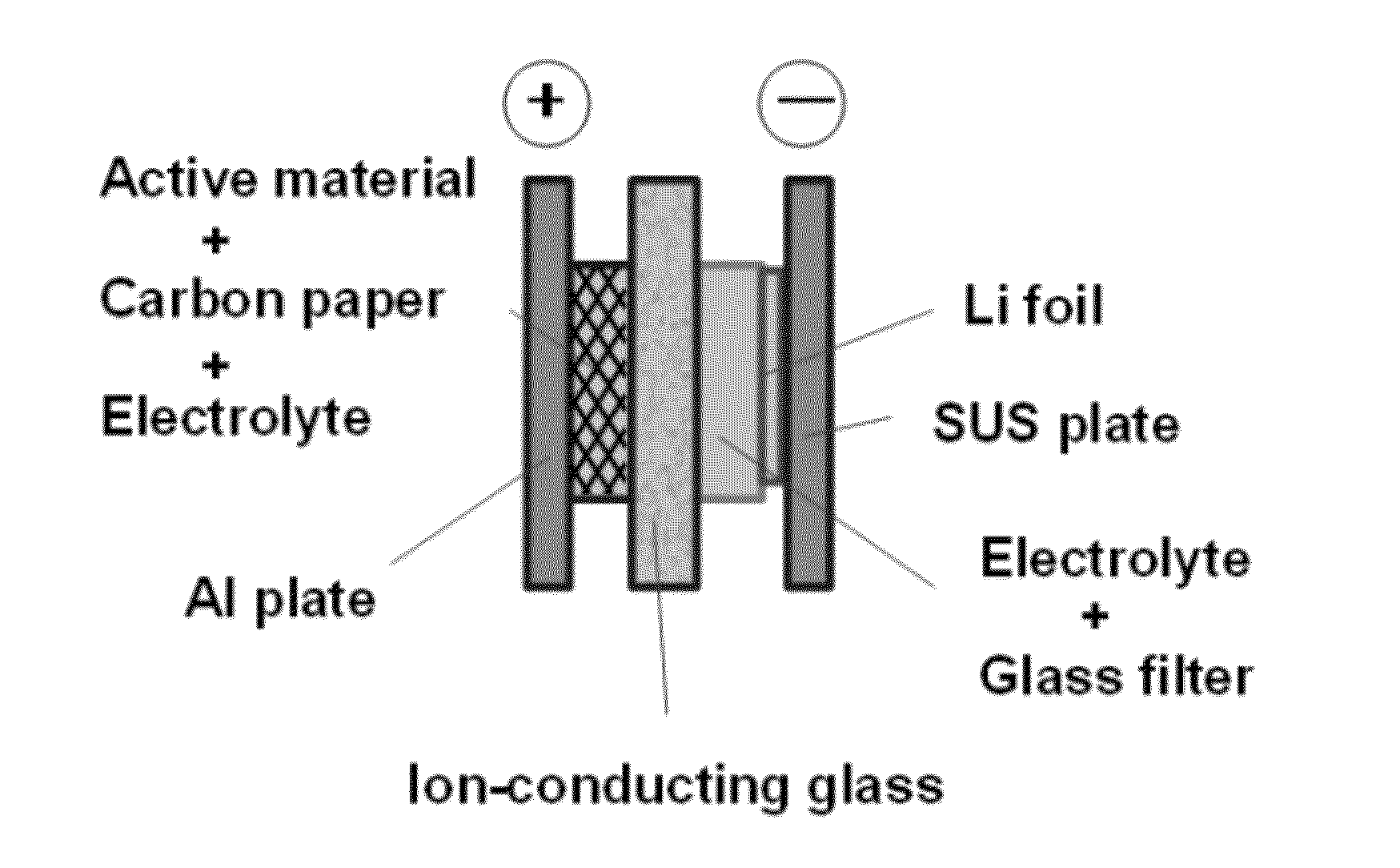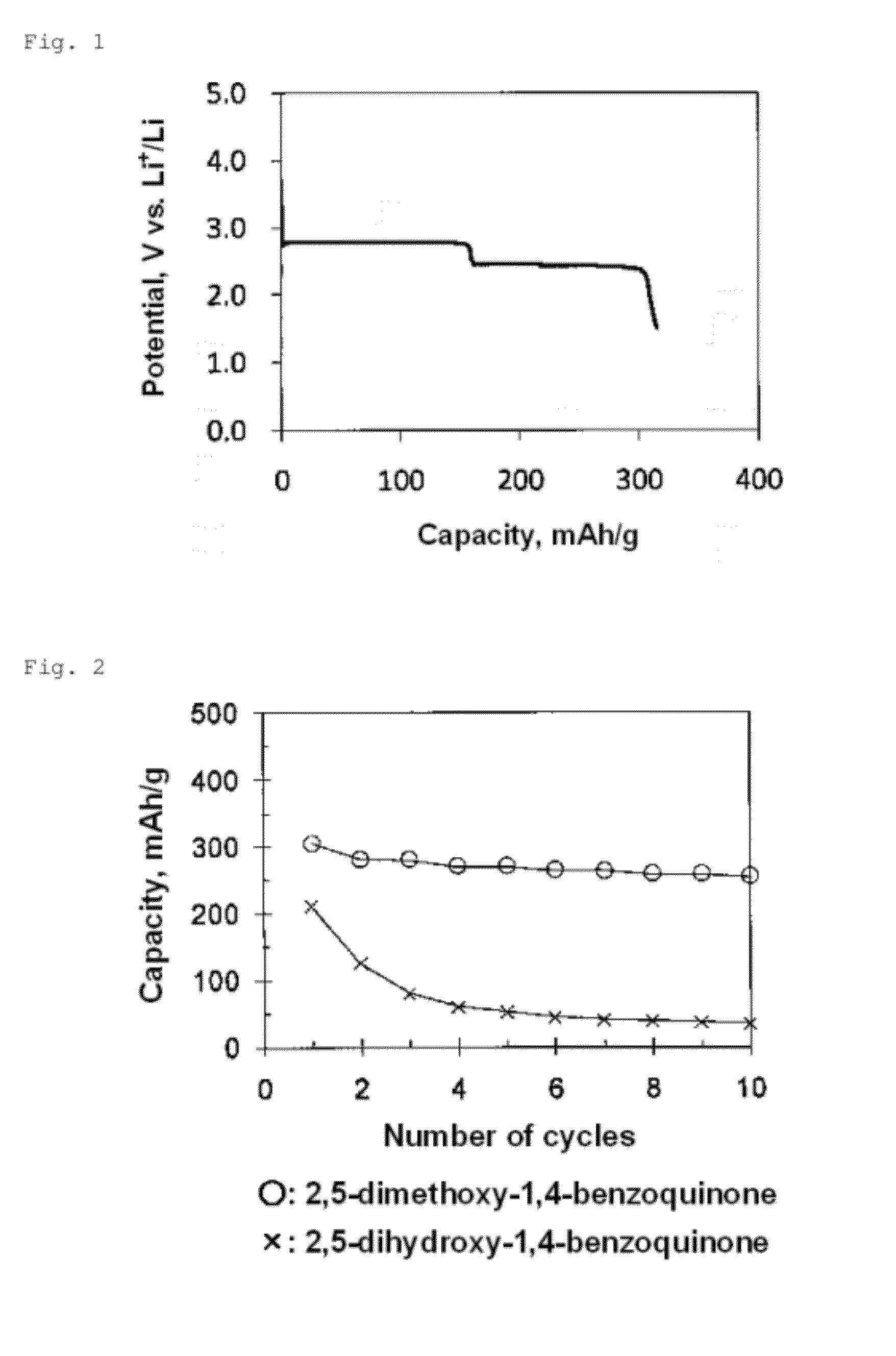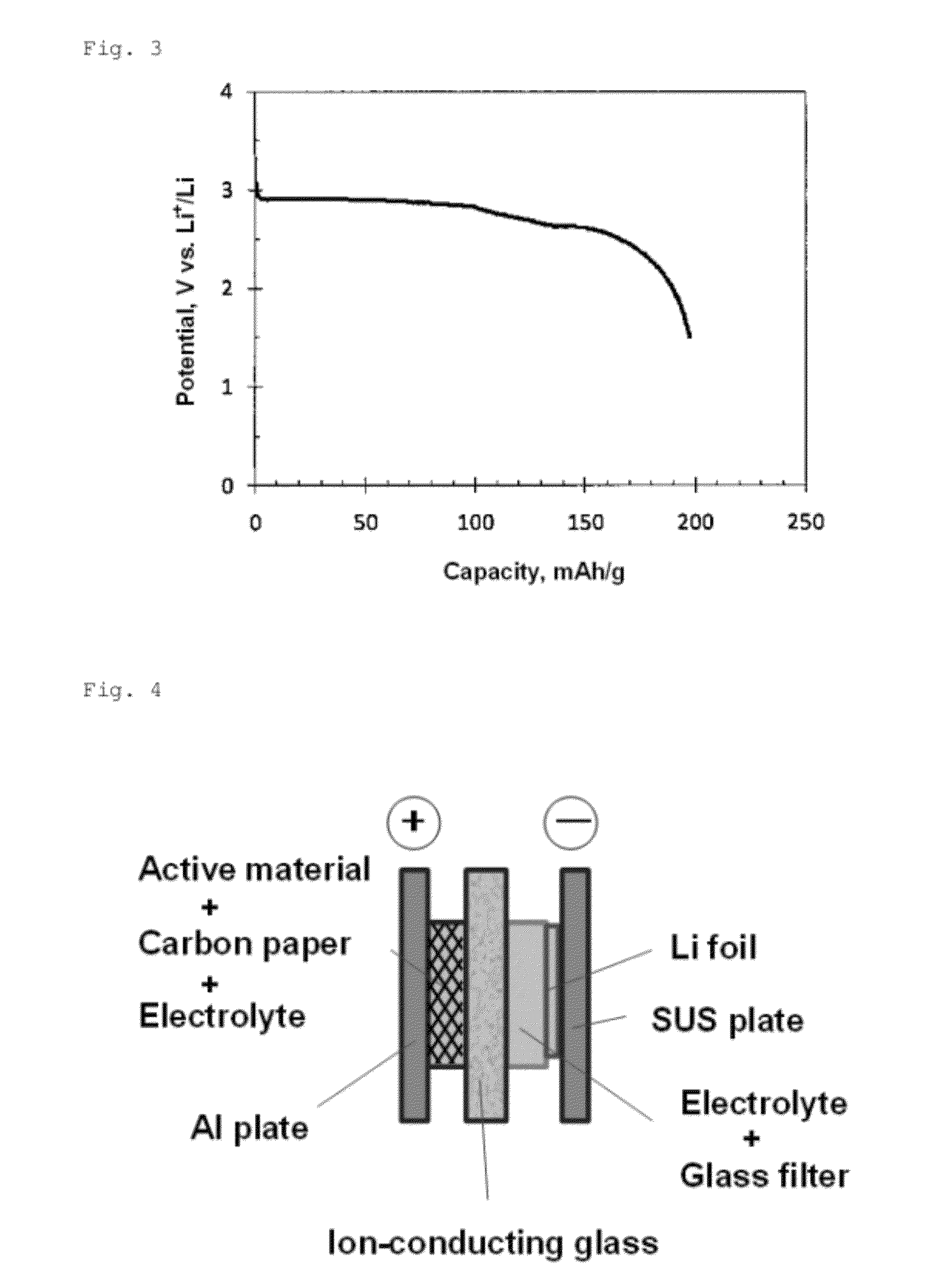Positive electrode active material for nonaqueous secondary battery
- Summary
- Abstract
- Description
- Claims
- Application Information
AI Technical Summary
Benefits of technology
Problems solved by technology
Method used
Image
Examples
example 1
[0027]Using 2,5-dimethoxy-1,4-benzoquinone (Tokyo Chemical Industry Co., Ltd.) as a positive electrode active material, acetylene black as a conductive auxiliary agent, and PTFE as a binder, the active material, conductive auxiliary agent, and binder were mixed at a weight ratio of 4:5:1 to prepare a 90-μm-thick sheet. The sheet was bonded to an aluminum mesh (thickness: 110 μm) while compressing, thereby producing a positive electrode. Using this as a positive electrode material, a lithium foil as a negative electrode material, lithium perchlorate / γ-butyl lactone (1.0 mol / L) as an electrolyte, and a glass filter as a separator, a coin-type battery for testing was produced.
[0028]The battery was subjected to a charge / discharge test in a 30° C. atmosphere at a current density of 10 mA / g or 20 mA / g in the potential range of 1.5 to 3.4 V (vs. Li). FIG. 1 shows an initial discharge curve (current density: 10 mA / g). As is clear from FIG. 1, the discharge curve has two flat portions at pot...
example 2
[0031]2,5-difluoro-3,6-dimethoxy-1,4-benzoquinone was synthesized according to the method described in P. P. Sah, S. A. Peoples, Arzneimittelforschung, 1961, 11, pp. 27-33. Using this as a positive electrode active material, acetylene black as a conductive auxiliary agent, and PTFE as a binder, the active material, conductive auxiliary agent, and binder were mixed at a weight ratio of 4:5:1 to prepare a sheet. The sheet was bonded to an aluminum mesh while compressing, thereby producing a positive electrode. Using this as a positive electrode material, a lithium foil as a negative electrode material, lithium bis(pentafluoroethanesulfonyl)imide / γ-butyl lactone (3.0 mol / L) as an electrolyte, and a glass filter as a separator, a coin-type battery for testing was produced.
[0032]The battery was subjected to a charge / discharge test at a current density of 20 mA / g in the potential range of 1.5 to 3.8 V (vs. Li). FIG. 3 shows an initial discharge curve. The discharge curve had two flat port...
example 3
[0033]2,5-dipropoxy-1,4-benzoquinone was synthesized according to the method described in Keegstra, E. M. D.; van der Mieden, V.; Zwikker, J. W.; Jenneskens, L. W.; Schouten, A.; Kooijman, H.; Veldman, N.; Spek, A. L.; Chem. Mater., 1996, 8, pp. 1092-1105. Using this as a positive electrode active material, and an ion-conducting glass as a separator, a two-chamber-type sealed battery for testing was produced. FIG. 4 schematically illustrates the battery.
[0034]In the battery for testing shown in FIG. 4, the current collector for positive electrode was an aluminum plate, the current collector for negative electrode was a stainless steel plate, and the negative electrode material was a lithium foil. The electrolyte on the negative electrode side was lithium perchlorate / γ-butyl lactone (1.0 mol / L). The electrolyte was held in a glass filter and placed between the negative electrode (lithium foil) and the ion-conducting glass. On the other hand, the electrolyte on the positive electrode ...
PUM
| Property | Measurement | Unit |
|---|---|---|
| Energy density | aaaaa | aaaaa |
Abstract
Description
Claims
Application Information
 Login to View More
Login to View More - R&D
- Intellectual Property
- Life Sciences
- Materials
- Tech Scout
- Unparalleled Data Quality
- Higher Quality Content
- 60% Fewer Hallucinations
Browse by: Latest US Patents, China's latest patents, Technical Efficacy Thesaurus, Application Domain, Technology Topic, Popular Technical Reports.
© 2025 PatSnap. All rights reserved.Legal|Privacy policy|Modern Slavery Act Transparency Statement|Sitemap|About US| Contact US: help@patsnap.com



